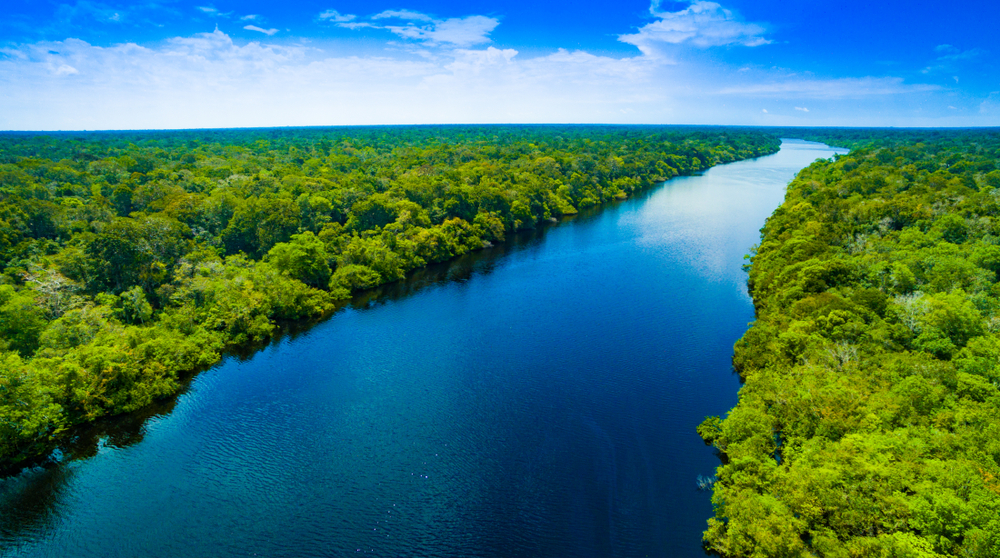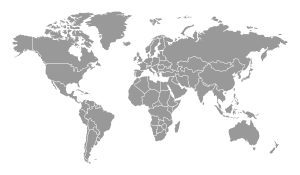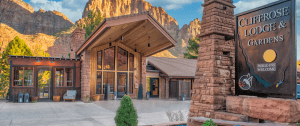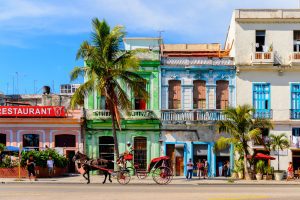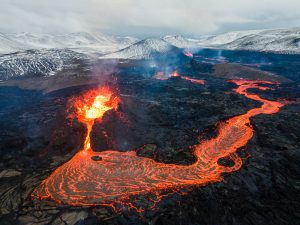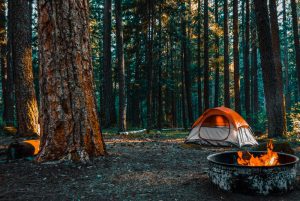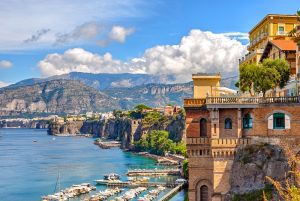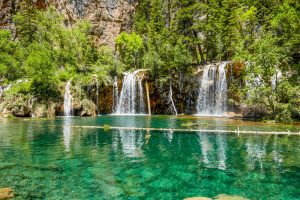Our planet is inundated with untouched places yet to be discovered. Some countries are fortunate enough to be blanketed with unspoiled terrain and an abundance of natural scenery. Out of the world’s 195 countries, we have picked the top 8 with the most beautiful nature. Ready your eyes for breathtaking, beautiful sites from these countries below.
Table of Contents
1. Switzerland

A mountainous, Central European country, Switzerland is small but packed with tons of natural wonders to explore. You’ll be taken away with the spectacular scenery in almost every corner of the country. Not only are its incredible natural sights beautiful, but its towns and cities as well.
With its natural landscapes, it is home to many hiking and biking trails and ski resorts. Visitors can ski at Matterhorn or go skydiving at Interlaken.
Natural Wonders
Your Swiss vacation won’t be complete without seeing the Matterhorn. This mountain is the most photographed in the world and one of the most iconic symbols in the country. It is about 4,478m high, making it one of the tallest mountains in the Alps. You won’t see any motorized vehicles in the area, as locals want to preserve the tranquility of the mountain. Thus, people travel via horse carriages or on foot to see this stunning peak.
Another must-see natural wonder is Interlaken, located between two lakes: Lake Thun and Lake Brienz. It promises stunning views of mountain peaks and botanical gardens. Adrenaline-seekers have many outdoor activities to choose from such as skydiving, kayaking, hiking, skiing, and snowboarding.
Jungfraujoch is one of the most beautiful places in the Swiss Alps. It’s where the Great Aletsch Glacier is located, which is the longest glacier in Europe and a UNESCO World Heritage Site. When visiting this place, you’ll take a train ride where you can enjoy the surrounding mountain scenery.
Other places to visit are Oeschinensee, a beautiful, blue alpine lake, and Rhine Falls, the most powerful and largest waterfall in Europe. If you’re a fan of The Lord of the Rings, you’ll need to visit Lauterbrunnen Valley, which heavily influenced the setting for Middle Earth and Rivendell.
Hotel Accommodation and Budget
Should you decide to visit Switzerland, you’ll have several hotel options with a wide variety of prices to choose from. Depending on your budget, you can find hostel dorms for $20 to $30 a night or private hostels and basic hotels for about $100 a night. Your budget per day varies on your preferred activities and locations.
If you’re on a backpacking trip, expect to spend at least $100 a day for food, transportation, and plenty of free outdoor activities. If you have a mid-range budget, you’ll be spending about $200 to $300 a day.
Best Time to Visit
Planning your desired activities will help you decide when to go. If you’d like to go skiing, go from December to March but also expect to see the most crowds during this season. In Switzerland, Zwischenzeit is also known as the shoulder months between the winter and summer seasons.
The shoulder season is one of the best times to travel around Switzerland. However, you’ll find most ski resort towns to be quiet and calm as most stores are closed.
2. Canada

Canada is the second-largest country in the world, spanning about 4,600km from north to south. It is home to rugged natural landscapes and 0.5% of the world’s population. You’ll find a variety of natural beauty, from spectacular mountains to blue lakes and forested valleys.
With the vast amount of nature present, you’ll have the chance to see many types of wild animals, including mountain lions, bighorn sheep, otters, bears, wolves, and more. These animals are protected by three marine conservation locations and 41 national parks.
Natural Wonders
One of the top-rated tourist attractions in Canada is Niagara Falls, nestled at the edge of the Niagara Gorge. It is one of the most famous waterfalls in the world, is a major source of hydroelectric power, and serves as a border between Ontario and New York. The falls are composed of three waterfalls: Horseshoe Falls, American Falls, and Bridal Veil Falls.
Take a look at bewitching mountain regions from Alberta, Mount Rundle in Banff National Park, or visit Peggy’s Cove lighthouse in Nova Scotia and watch the sunset during golden hour. The flourishing forests of British Columbia will take your breath away as the sun beams through the trees on a calm afternoon. To see wild animals like bears, you can take your chances by visiting Khutzeymateen Provincial Park.
Catch the beauty of Northern Lights and colorful landscapes in Yukon Territory, and if you’re coming in autumn, Yukon Territory guarantees picturesque scenery made up of green and orange hues. Other majestic areas to explore are the Rocky Mountains, Prairies & Parklands, Arctic, St. Lawrence Valley, BC Interior, the Gaspé and Appalachian Mountains, and Great Lakes.
Hotel Accommodation and Budget
The total expenses depend on your planned activities and the city you’re staying in. If you’re staying in a hostel dorm, you’ll probably spend about $22 a night, where a cheap hotel room can cost around $50 a night.
For better prices, you can opt for affordable and convenient Airbnbs that range between $30 to $100 a night. As a backpacker, you’ll need to allot about $60 a day for daily expenses. If you’re going for a mid-range budget, expect to shell out about $150 a day.
Best Time to Visit
Going to Canada may depend on your cold tolerance. Winter in Canada can be extreme and difficult to bear. If you’re into skiing, then winter is the best time to hit the Canadian Rockies.
If you’re after more tolerable weather, summer is the best time to go but is also the busiest and most crowded time of the year. The weather in summer is about 70°F, which is a perfect temperature for music festivals and outdoor activities like biking and hiking.
3. South Africa

The scenic beauty of South Africa is endless, and no single article can list it all. From desert coasts to beautiful peaks, you’ll find landscapes for every traveler.
Interestingly, the country speaks 11 languages and is called the Rainbow Nation due to its diversity. As you would expect from a country of wonder, it is filled with many plant species, mammals, birds, and fish. To protect the wildlife, South Africa has about 9,000 reserves and the world-famous Kruger National Park.
Natural Wonders
In the north, south, east, and west, you’ll find awe-inspiring natural landscapes that make going around the entire country worth it. In the south, Chapman’s Peak offers a scenic mountainside drive and is also where you can see the Lion’s Head, a rocky peak about 669m above sea level.
The Lion’s Head is a popular attraction for hikers and paragliders. Plus, it’s also a great picnic spot to view Robben Island from. If you’re going in the north, Mpumalanga, the land of the rising sun, is another must-see for its Blyde River Canyon that meets the Treur River.
This river is comparable to the Grand Canyon, but with more green hues. In the east, Drakensberg Mountains is another spectacular site for its Battle Cave and Amphitheatre. A part of Drakensberg is already a UNESCO World Heritage Site for its beauty and rock paintings. Lastly, don’t skip visiting the Diamond Coast, Orange River, and the Karoo in the western part of the country.
Hotel Accommodation and Budget
As a backpacker, you’ll spend around $40 a day for a hostel and inexpensive meals. If you’re on a mid-range budget, prepare at least $65 a day for a budget hotel and meals at restaurants. For a more luxurious trip, you can spend at least $270 a day on a hotel, restaurant food, and private tours.
Best Time to Visit
Depending on your interests, the best time to go may vary. If the weather is a factor, it’s important to note that the warmer months are between November to April, while the cooler months are from May to October. If you don’t want huge crowds, it’s best to avoid the peak season in December, January, and around Easter.
For the lowest prices and bookings, the rainy season from June to August is the best season and the best time to visit the Karoo.
4. Iceland

Iceland’s natural wonders remain unspoiled. From glaciers to black sand beaches and volcanic craters, Iceland has one of the most diverse landscapes in the world. It is the second-largest island in Europe and is located in the Atlantic and near the Arctic Circle.
It has a land area of about 40,000 square miles, about as much as Portugal and Hungary. The weather here is mild and is influenced by the East Greenland polar current. In summer, it can reach as high as 76°F and drop to 51°F. The winter climate is comparable to New York, which averages about 32°F.
Natural Wonders
One of the most iconic attractions in Iceland is the Blue Lagoon, which is abundant in minerals, silica, and algae. It’s popular for its misty, blue lagoons and volcanic scenery. Most people come in summer to take a dip in the spa and benefit from the healing powers of the water.
Iceland is also rich in glacier landscapes that are influenced by its location at the edge of the Arctic Circle. In fact, about 10% of the country is covered with glaciers that are millions of years old. If you want to see glaciers and lagoons at the same time, you’ll find that in the Jökulsárlón Glacier Lagoon at the Vatnajokull National Park.
The Jökulsárlón Glacier Lagoon is the best place to find wild seals and floating icebergs. These icebergs drift into the Diamond Beach at the southern end of the lagoon and look like sparkling diamonds when the sun shines.
Aside from lagoons and glaciers, Iceland is also teeming with volcanic landscapes, making it the Land of Ice and Fire. Since it is situated above the Mid-Atlantic Rift, you’ll find several hot springs, multicolored craters, black sand, and lava rocks. If you go to Iceland, you shouldn’t miss seeing other spectacular landscapes including the Seljalandsfoss Waterfall, the Reynisfjara basalt columns, the Crystal Ice Cave in Vatnajökull Glacier, Mt. Kirkjufell, and Vatnajokull National Park.
Hotel Accommodation and Budget
If you’re on a budget, you can stick to about $50 a day. This would include camping, cooking your own food, and choosing free outdoor activities. For a backpacker staying in a hostel dorm, you’ll be paying about $70 a day for dorm accommodation, your own cooked food or fast-food restaurant meals, and a few inexpensive activities. However, if your budget is mid-range, $170 to $200 a day is good enough for staying at a budget hotel, eating at inexpensive restaurants, renting a car, and doing mid-range priced activities.
Best Time to Visit
The most crowded months are in the summer season from June to September as the weather is mild. If you don’t like the crowds, you can come in the shoulder season in either spring or fall, but the weather is cooler at about 40°F to 45°F. Between October and April, the weather is extremely cold, dropping below 32°F, which can be difficult for some. However, it’s also the perfect time to see the Northern Lights.
5. New Zealand

New Zealand is truly an enchanting place with a mix of beautiful mountains, stunning glaciers, sandy beaches, and wondrous wildlife. Located in the southwest Pacific Ocean, New Zealand is a country of two large islands and several smaller ones. It is known as The Land of the Long White Cloud, as it was formed by volcanoes and cooled by glaciers.
Its diverse geographical features make the country a miniature earth. On one end you’ll find beaches and forests, and then on the other are snowy mountains and alpine lakes. In a nutshell, the country has three World Heritage Sites, 14 National Parks, 20 forest parks, over 1,000 rivers, 40 lakes, and more than 3,500 reserves.
Natural Wonders
Among the many lakes of New Zealand, Lake Matheson is one of the best. It’s a favorite for many tourists and photographers because of its mirror-like appearance on clear days when the lake makes a beautiful reflection of the forest, Fox and Franz Josef Glaciers, and Mount Cook. For more striking views, Doubtful Sound and Milford Sound are picture-perfect alpine landscapes that guarantee calm and tranquil waters.
If you’re into beaches, visit Piha, a famous black-sand beach surrounded by rainforests, lagoons, and waterfalls. You’ll also admire unique rock formations from Moeraki Boulders, which have the largest spherical boulders in the world. For those who love hiking and kayaking, you’ll surely enjoy traveling around Abel Tasman National Park and Mt. Aspiring National Park.
Aside from mountains and waters, you must visit Tane Mahuta, also known as the Lord of the Forest. Located in Waipoua Forest, Tane Mahuta is a huge Kauri tree about 1,250 to 2,500 years old and 51.2m high. If you’d like to go on a 19.4km walk, head over to Tongariro National Park and have a splendid day’s walk while catching the golden sunset and views of Mt. Ngauruhoe and Emerald Lakes. It’s also worth mentioning that Tongariro National Park is home to Mt. Doom from the Lord of the Rings.
Hotel Accommodation and Budget
For the tightest budget, it is suggested to spend at least $50 to $60 a day for a hostel dorm, free outdoor activities, your own cooked meals, and transportation. If you have mid-range funds, at least $140 a day is needed to stay in a decent hotel, eat at restaurants, ride a taxi for transportation, and do paid activities. For a luxurious stay, expect to spend at least $280 a day for hotel accommodation, tours, restaurant food, renting a car, and more.
Best Time to Visit
To get the best prices, it’s best to visit in the shoulder season. The most popular season is summer, from December to February, when sunny days are long with an average temperature of 68°F to 77°F. For lesser crowds, come in the fall season from March to May. If you’re into snow activities, then winter is the best time to visit when the temperatures drop to 50°F.
6. Vietnam

Nature enthusiasts will surely enjoy Vietnam’s fascinating beaches and towering mountains. Vietnam is a small country in Southeast Asia that has become popular among tourists for its scenic landscapes and inexpensive travel. You’ll also get a chance to learn about the local lifestyle while exploring its hill tribes, fishing villages, and rice terraces.
Vietnam is bordered by China, Laos, and Cambodia and is ranked the 15th most populous country in the world. In numbers, 42% of the land area of Vietnam is covered by tropical forests and 40% is made up of mountains.
Natural Wonders
One of the most jaw-dropping landscapes can be found at Cat Ba, a favorite of hikers and kayakers. Plus, get the best views when you go on top of Cannon Fort. Another must-see mountainous view is Da Lat, located in Lake Xuan Huong and has pleasant, cool temperatures. In the far northeast, Ha Giang Province may be an unpopular destination, but it promises the best views of green valleys.
Vietnam also has a World Heritage Site known as Ha Long Bay. Its mystical fog and dreamy golden sunrise are on many a traveler’s bucket list. It is famous for the floating mammoth limestone karst rocks, its 1,969 islands, and incredible flora and fauna.
If you’re in Asia, you mustn’t miss seeing rice terraces, which can be found in Sa Pa in Vietnam. It’s also where you’ll find the tallest peak, Mount Fan Si Pan. If you’re into beaches, head over to Nha Trang, which has been coined the Miami of Asia.
Interestingly, you’ll find red and white Sahara-like sand dunes in Mui Ne. Go sand sledding at the Red Dunes or take pictures at the White Dunes in the morning and evening. Other impressive landscapes to visit are the pink hues of Da Lat, the largest cave in the world Son Doong cave, and the virtually untouched Phu Quoc Island.
Hotel Accommodation and Budget
If you’re a backpacker, expect to spend at least $25 a day for cheap accommodation, inexpensive street food, and public transportation. If you have a mid-range budget, $50 a day is enough for private accommodation, a decent meal at restaurants, and private transportation. If budget is the least of your concerns, then $100 a day is good enough for a nice hotel, restaurant meals, transportation, and various paid activities.
Best Time to Visit
The best time to go depends on the most ideal weather and location. Going to the northern areas must be done from October to December for the best weather. If you’re going from May to November, you may be greeted with heavy rains and possible floods during the rainy season. For activities on the coast, it is best to go between February and May as the weather is mild with fewer rainstorms and temperatures rising to the 80sF.
7. Brazil

Brazil is the largest country in South America and rich in natural wonders. It is best known for Rio de Janeiro, the Amazon, and the Carnival festival. It shares a border with most South American countries except Ecuador and Chile.
Although it is famous for the Amazon River and forest, you’ll also find pine forests, long coastal plains, and pampas and the Abismo Guy Collet, the deepest cave in South America. Essentially, there is no shortage of breathtaking views in this country.
Natural Wonders
Nothing quite compares to the Meeting of the Waters in Manaus, where the light sandy waters of the Amazon River flow side by side the dark, black waters of the Rio Negro. It is an unusual phenomenon, as the two rivers flow at different speeds and temperatures.
The Amazon of Brazil, as most people know, is the life spring and lungs of the planet. It is home to more than a third of the world’s species, with one out of 10 found here. The forest is estimated to have 390 billion trees, with a huge portion of the forest still undiscovered.
Apart from the famous Amazon, the Iguazú Falls is a majestic, natural border between Brazil and Argentina. It is an enormous, 2,700m high waterfall with an impressive U-shape. Brazil also features the world’s largest wetland, Pantanal Wetlands. This impressive area spans more than 200,000 square kilometers and is best visited between July and October.
Lastly, you’ll be mesmerized by the blindingly white sand dunes in Lençois Maranhenses. Other must-see landscapes are the sunken pool in Poco Encantado, the beautiful beaches in Fernando de Noronha, the volcanic atoll in Rocas Atoll, and the mystical caves in Gruta do Lago Azul.
Hotel Accommodation and Budget
Depending on when and where you stay, prices vary a lot. For instance, staying in a hostel dorm costs $8 a night, while a private hostel costs about $25 to $40. If you choose to stay in a budget hotel room, it ranges between $20 to $30 a night. On average, expect to spend about $60 to $70 a day for food and transportation.
Best Time to Visit
The weather varies because of the large geographical area of Brazil. If you prefer fewer people and cheaper prices, it is best to come in winter, from December to March when the temperature averages 77°F. February is the peak season and one of the most expensive months since it is Carnival festival month. If you’re heading south in Brazil, it’s worth mentioning that the coldest months are from June to September, while the hottest are from December to March.
8. United States
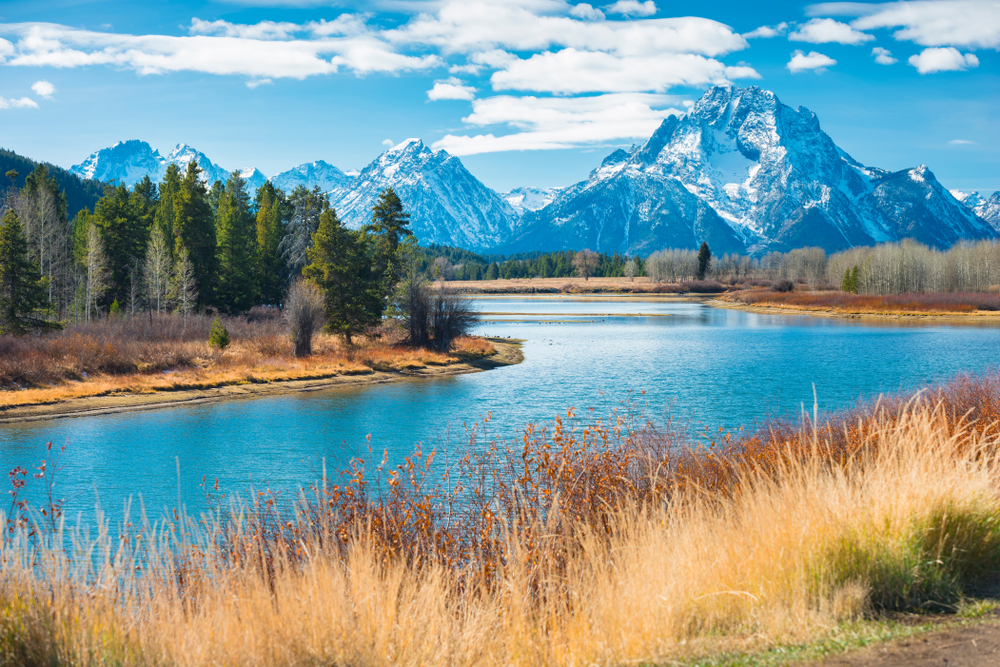
The United States has endless, stunning natural landscapes. The USA in North America consists of 50 states and has a population of 331 million residents, making it the third most populous country in the world. In terms of land area, it is the third-largest in the world after Russia and China.
The country has 62 National Parks and 12 Natural World Heritage Sites. From vast deserts to enchanting forests and stunning mountains, the United States has varied scenery waiting to be explored. With its 6 million square km of terrain, you’ll encounter endless incredible landmarks.
Natural Wonders
The White Mountains in New Hampshire are filled with patches of colorful trees in autumn that feature red, yellow, and orange hues. You can also go to Crater Lake in Oregon, a lake created by volcanic eruptions thousands of years ago. If you’re headed to Hawai’i, prepare to be overwhelmed by its majestic mountains, clear blue waters, and impressive surfing waves.
Lake Tahoe in California is a two-million-year-old lake that offers sunny beaches and top ski resorts. For picturesque views of vibrant red and pink colors, Antelope Canyon in Arizona won’t disappoint. Every corner and curve of the canyon is a picture-perfect beauty, especially when the light streams through.
If you’d like to see glaciers, Kenai Fjords in Alaska is dominated by 40 glaciers and a plethora of wildlife, including bald eagles, Humpback whales, and sea lions. In Yellowstone National Park in Wyoming, the most iconic landmark is the Grand Prismatic Spring, the third-largest spring on the planet. The spring has streaks of blue, yellow, and orange which are caused by bacterial microbes.
The list goes on and on. If you’d like to see natural wonders that are listed as a World Heritage Site, you can simply go to National Parks like Grand Canyon National Park, Hawai’i Volcanoes National Park, Redwood National and State Parks, Yosemite National Park, and Waterton Glacier International Peace Park.
Hotel Accommodation and Budget
The expenses for each state and city in the United States vary a lot. For instance, prices in New York are more expensive compared to Florida. However, when you go specifically to Miami, Florida, prices can be quite expensive as well.
In general, a backpacker may spend an average of $80 a day for a hostel, cooked meals, public transportation, and free tourist attractions. For a mid-range budget, you’ll need at least $150 a day for a private room, meals at cheap restaurants, public transportation, and a few paid activities. If you have a higher budget, you can spend a minimum of $300 a day for a nice hotel, meals at a restaurant, renting a car, and tour activities.
Best Time to Visit
The best time depends on the city you’re visiting, as the weather varies from state to state. If you’re headed north, the weather gets extremely cold and mildly hot, while the weather in the south gets hot and humid with warm winters. Generally, it depends on the activities you’re going for.
If you’re headed to the beaches, it’s best to come during the summer. For snow activities, we recommend coming in winter or spring. However, some states like Colorado, Utah, and California offer year-round skiing at top ski resorts.

